

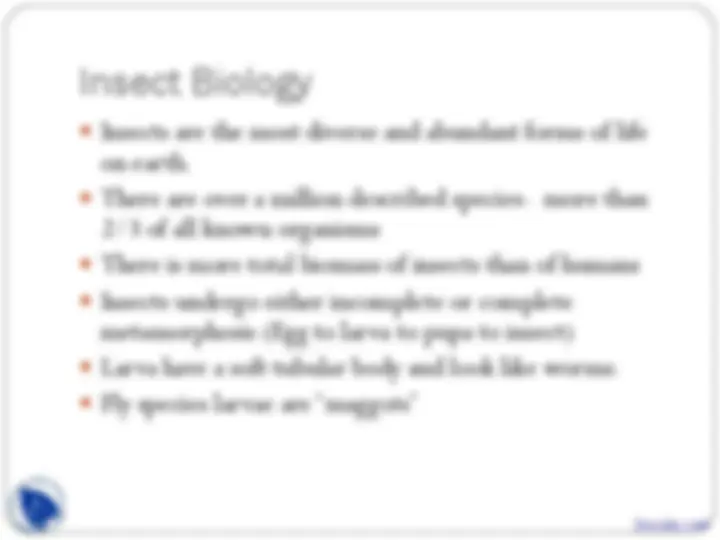
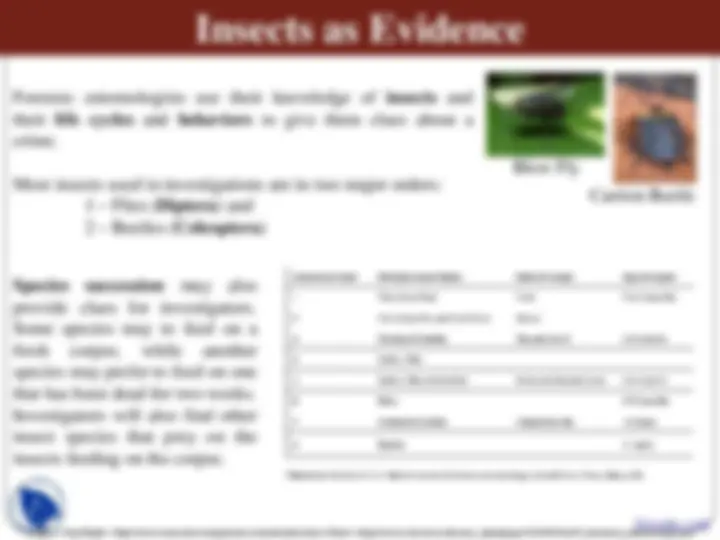
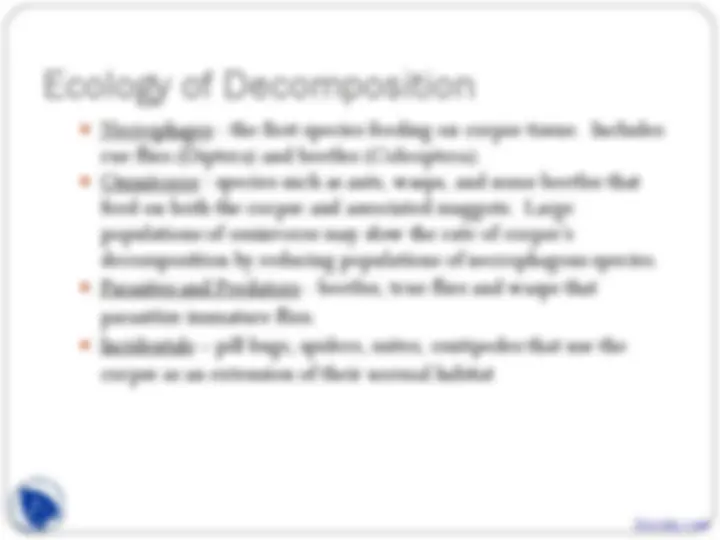
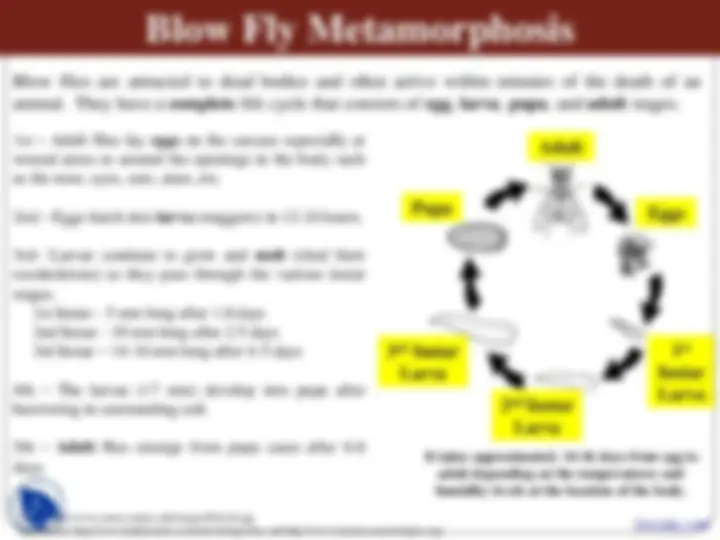
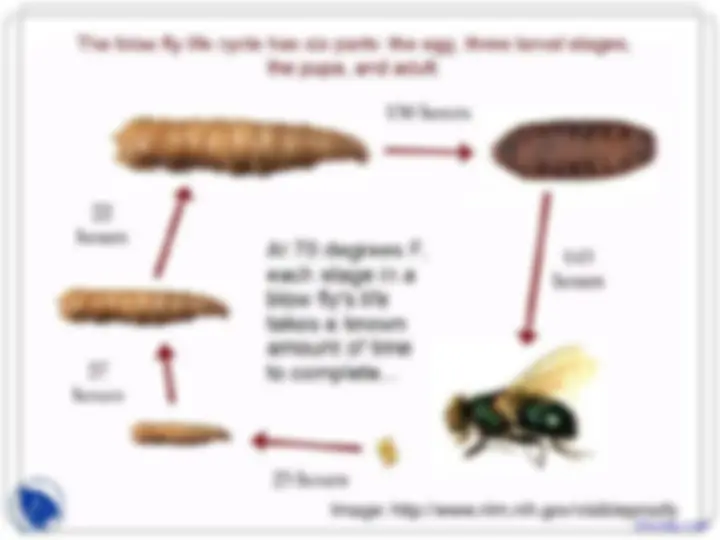
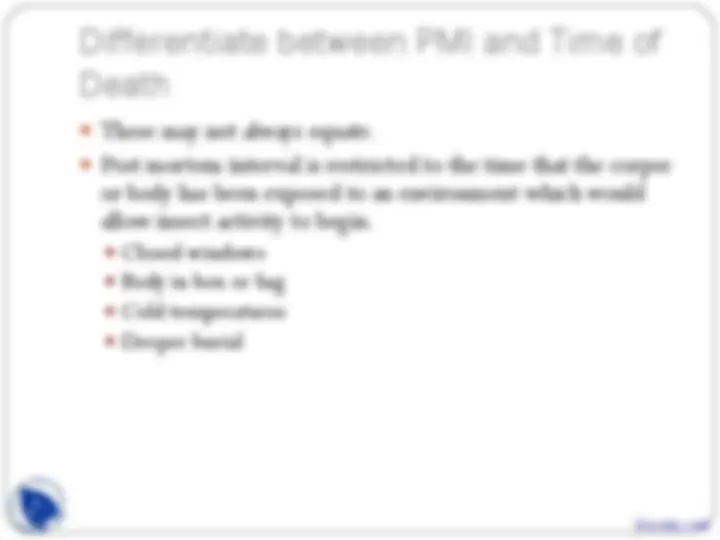
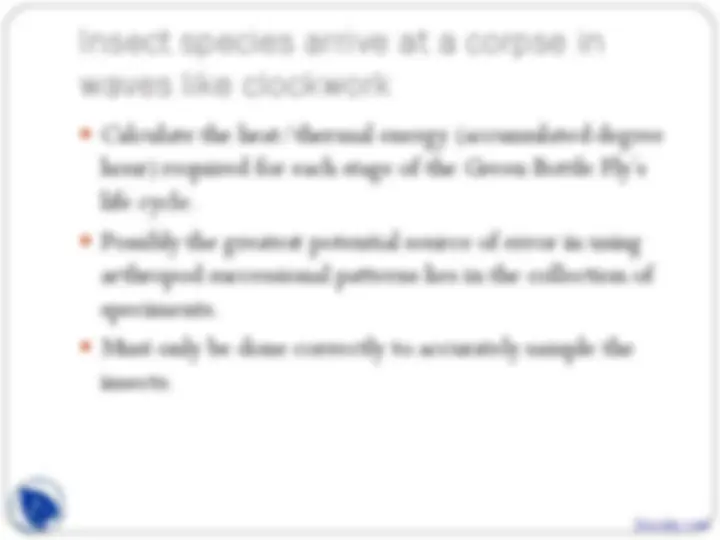
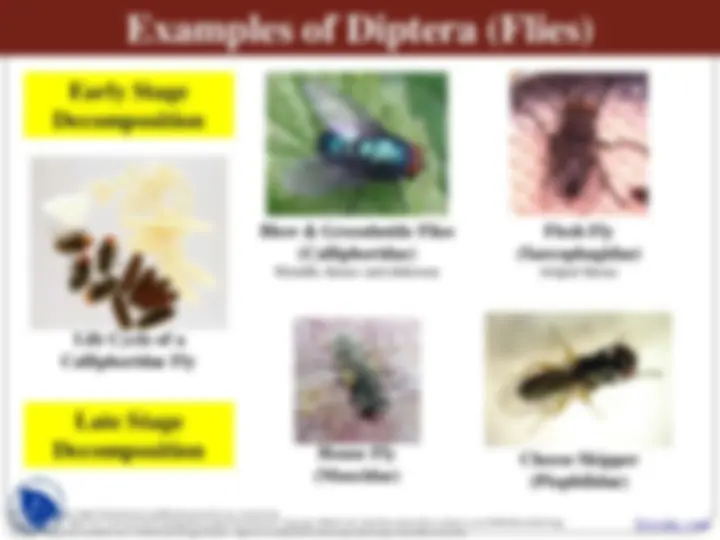
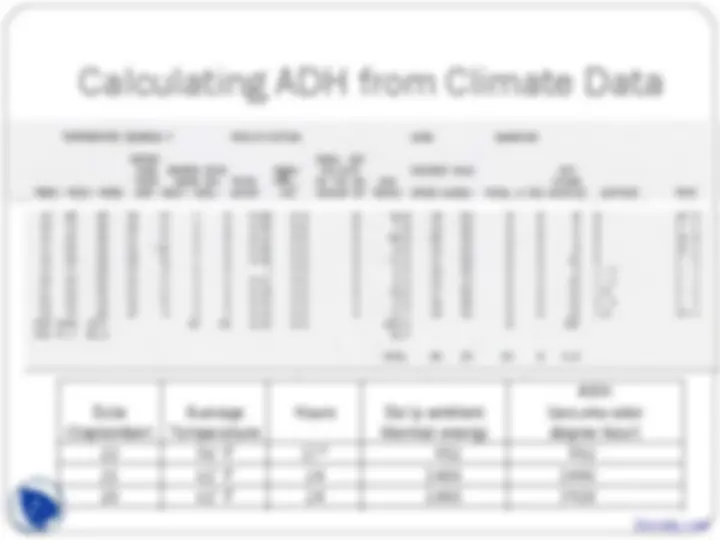

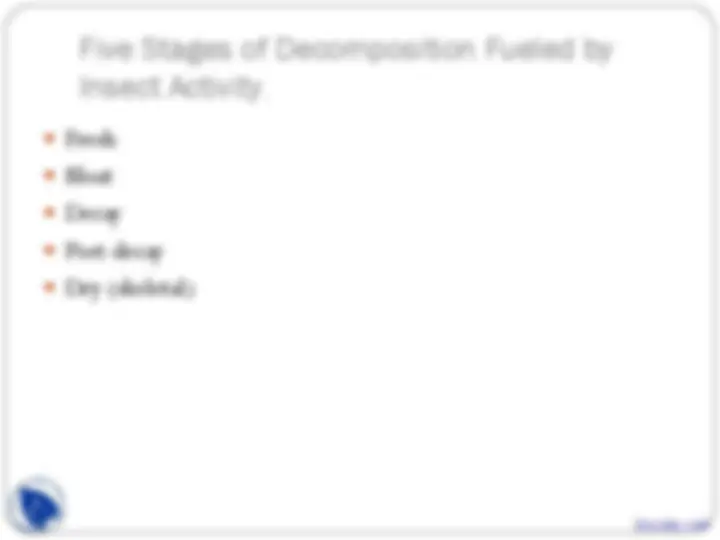
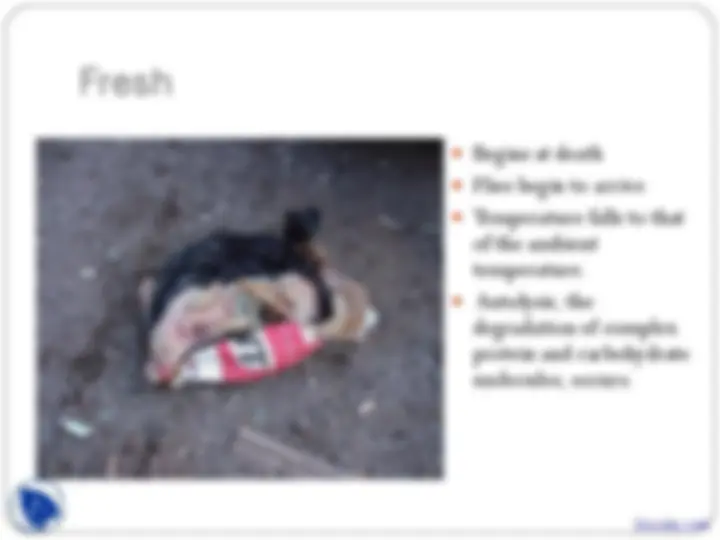
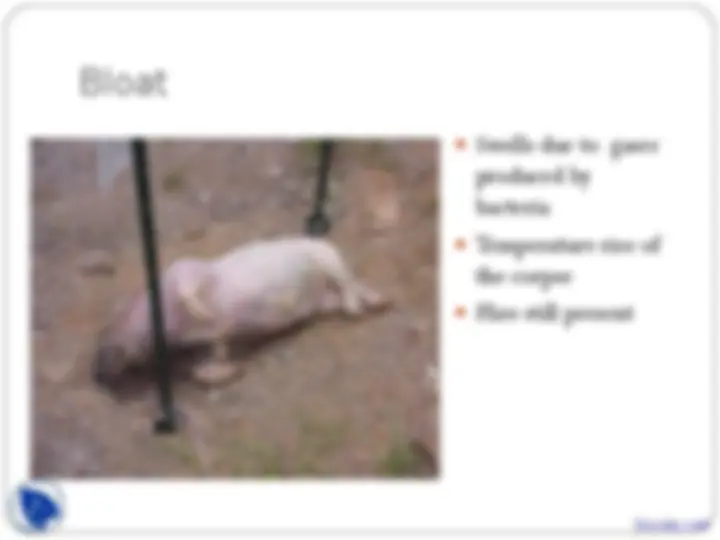
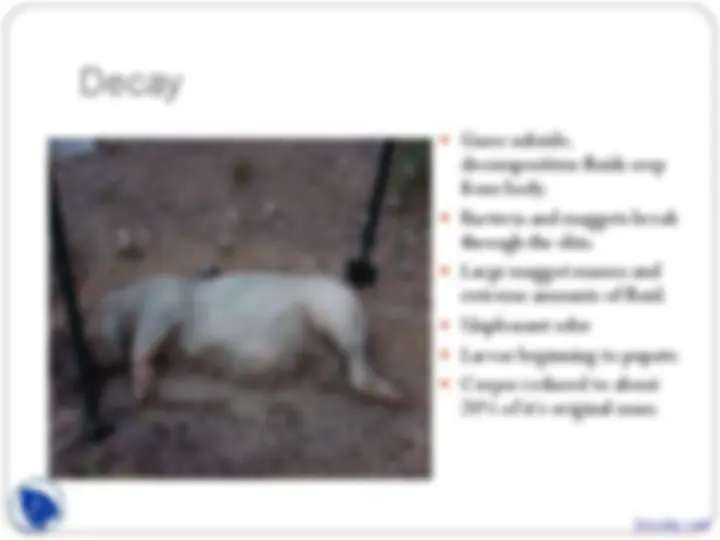
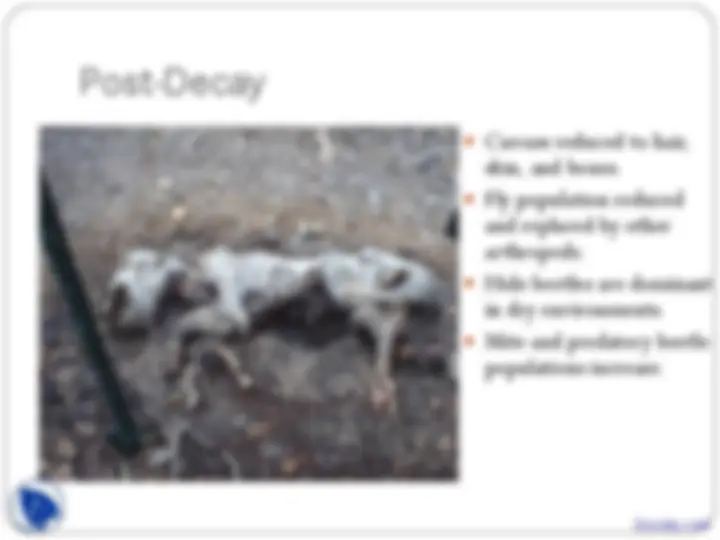
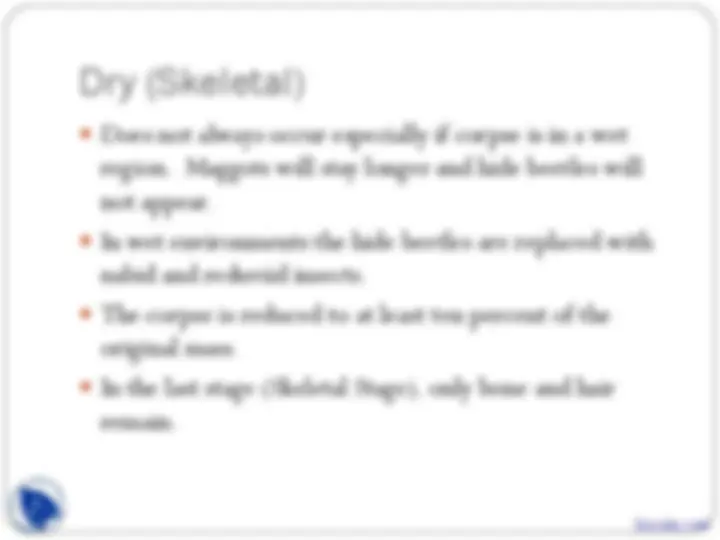
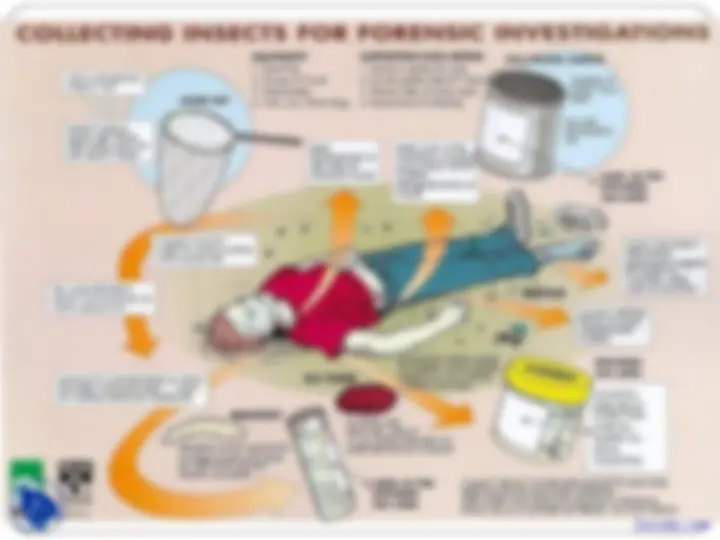



Study with the several resources on Docsity

Earn points by helping other students or get them with a premium plan


Prepare for your exams
Study with the several resources on Docsity

Earn points to download
Earn points by helping other students or get them with a premium plan
Community
Ask the community for help and clear up your study doubts
Discover the best universities in your country according to Docsity users
Free resources
Download our free guides on studying techniques, anxiety management strategies, and thesis advice from Docsity tutors
Forensic science (often shortened to forensics) is the application of a broad spectrum of sciences and technologies to investigate and establish facts of interest in relation to criminal or civil law. It includes: Forensic Entomology, Criminal Investigations, Various Stages, Life Cycle, Insects As Evidence, Postmortem Interval, Using Factors, Insect Related Evidence, Insect Biology, Biomass of Insects
Typology: Slides
1 / 27

This page cannot be seen from the preview
Don't miss anything!




















Forensic entomologists use their knowledge of insects and their life cycles and behaviors to give them clues about a crime.
Most insects used in investigations are in two major orders: 1 – Flies ( Diptera ) and 2 – Beetles ( Coleoptera )
Blow Fly Carrion Beetle
Images: Top Right - http://www.insectinvestigations.com/aboutfe.htm, Chart - http://www.clt.uwa.edu.au/__data/page/112507/fse07_forensic_entomology.pdf
Species succession may also provide clues for investigators. Some species may to feed on a fresh corpse, while another species may prefer to feed on one that has been dead for two weeks. Investigators will also find other insect species that prey on the insects feeding on the corpse.
Docsity.com
Succession of Insects on the Corpse
Estimates of postmortem intervals based on insects present on the
remains are based on:
Ecological succession occurs as an unexploited habitat (like a
corpse) is invaded by a series of different organisms.
The first invasion is by insect species which will alter the habitat in
some form by their activities.
These changes make the habitat attractive to a second wave of
organisms which, in turn, alter the habitat for use by yet another organisms.
Image: http://www.nlm.nih.gov/visibleproofs
Differentiate between PMI and Time of
Death
These may not always equate.
Post mortem interval is restricted to the time that the corpse
or body has been exposed to an environment which would allow insect activity to begin. Closed windows Body in box or bag Cold temperatures Deeper burial
Insect species arrive at a corpse in
waves like clockwork
Calculate the heat/thermal energy (accumulated degree
hour) required for each stage of the Green Bottle Fly’s
life cycle.
Possibly the greatest potential source of error in using
arthropod successional patterns lies in the collection of
speciments.
Must only be done correctly to accurately sample the
insects.
Informational Source: http://naturalsciences.org/files/documents/csi_tg_overview.doc Images: http://www.cals.ncsu.edu/course/ent425/library/spotid/coleoptera/coleoptera.html & http://www.forensicflies.com/beetles.htm
Carrion Beetles ( Silphidae) Adults & larvae feed on fly larvae
Rove Beetles ( Staphylinidae ) Predator of fly eggs
Hide Beetles ( Scarabidae ) Usually the last to arrive
Clown Beetles ( Histeridae ) Predator of fly eggs
Ham & Checkered Beetles ( Cleridae ) Predator of flies & beetles; also feed on dead tissue Skin Beetles^ ( Dermestidae ) Feed on dried skin & tissues Docsity.com
Calculating PMI from
Accumulated Degree Hours (ADH)
From To Temp Hours ADH Cumulative ADH
Egg 1 st^ Instar 70 F 23 23 x 70=
1610 ADH
1 st^ Instar 2 nd^ Instar 70 F 27 27 x 70=
1890 ADH
2 nd^ Instar 3 rd^ Instar 70 F 22 22 x 70=
1540 ADH
3 rd^ Instar Pupa 70 F 130 130 x 70=
9100 ADH
Pupa Adult Fly 70 F 143 143 x 70=
10010 ADH
Five Stages of Decomposition Fueled by
Insect Activity.
Fresh
Bloat
Decay
Post-decay
Dry (skeletal)